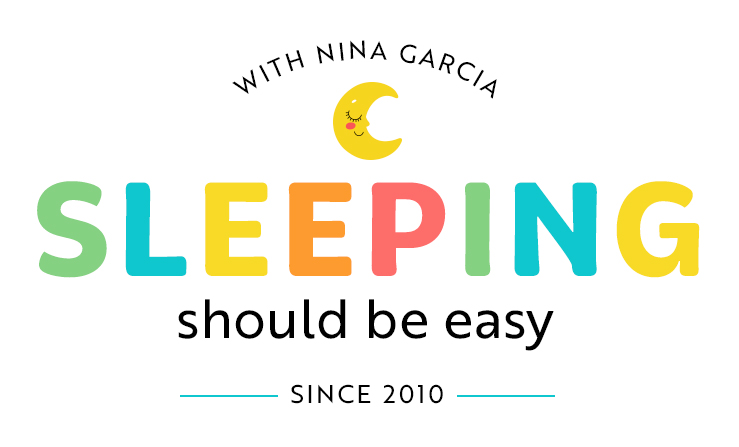How to Get Things Done with a Toddler
Wondering how to get things done with a toddler when he’s needy (and there’s so much to do)? Organize your days with these 5 effective tips.
 Are you finding it impossible to get anything done with your toddler around?
Are you finding it impossible to get anything done with your toddler around?
You’re at your wit’s end, unable to do much with him awake, from taking a shower loading the dishwasher. You end up doing most of these tasks after his bedtime, which means you’re dragging yourself the next day from having stayed up the previous night.
Whether it’s washing dishes, grocery shopping, or working from home, you can’t get anything done when he can’t entertain himself at all. Spending time together—from playing to crafts to reading—is still not enough for him to be happy.
How to get things done with a toddler
If you can relate, you’re definitely not alone.
I’ve had my share of days with kids who needed me to play and keep them company. I’ve even found myself anxious for them to get older and become more independent, then felt guilty for not cherishing the moment.
Still, we’ve all wanted to have a few hours—even minutes—to get other stuff done, too (and keep our sanity). To have that infamous “alone time” we moms are supposed to have.
Rest assured, this stage passes on its own eventually. But if “eventually” can’t come quick enough, you’re still not without options. After three kids, I’ve learned a few tricks to get things done (and without relying on screen time).
From actionable tips to mindset shifts, these tips can help you be productive, enjoy your toddler, and even find time for yourself:
1. Include your toddler in your tasks
It’s easy to think, If she wasn’t in the way, I’d get these dishes done so much faster. You feel compelled to find something to occupy her, shoo her away, or rush like crazy in the few minutes you have to yourself.
Sometimes we think we need to save our heavy tasks for when the kids are out of the way, unaware that we can do both at the same time. To be sure, getting housework done is much quicker alone, but including your toddler has its benefits.
For one thing, you can reserve your evenings as time for yourself (instead of reserving them for your to-do list). You’re also teaching her life skills she’ll likely need to learn for herself. And finally, you’re able to spend time together, even having fun along the way.
So, what are a few things she can help with? She can…
- Spray bathroom surfaces while you wipe with a rag
- Sweep the mess from the kitchen floor
- Put toys and items in a bin or shelf
- Hold the cord while you vacuum the living room
- Pull clothes from the dryer
- Sort a clean load of laundry
- Refill the diapers and wipes
- Sort spoons and forks into the drawer
- Pick music for your “dance cleaning party”
By including her in your cleanup tasks, you’re teaching her important life skills, clearing up your evenings, and even having fun together. She won’t feel like she has to nag or whine to grab your attention when you can invite her to cook with you in the kitchen.
Free printables: Want even more ideas? Join my newsletter and get your copy of Toddler Tasks and Chores to encourage self-sufficiency and independence! Grab it below—at no cost to you:
2. Create a basket of “trinkets”
One reason your toddler clings to your side is that he doesn’t have anything else to do. Switch things up by creating a basket of “trinkets.”
Before you even need any of them, gather a few simple items and toys to hand him when you need time to focus on something else. This way, he’s preoccupied with something new, allowing you to get your task done.
To start, hand him one item at a time. Giving him the whole basket, or even a few things together, isn’t necessary. Instead, stretch these items as long as they can go by giving him one item at a time.
Then, give simple items that don’t need your help. The point is to keep him occupied on his own with toys that don’t need your attention. Stick to simple items like crayons, water paint, stickers, and figurines.
3. Include “quiet time” into your day
We all treasure our coveted nap time, if only so we can get a few moments of peace to ourselves. But what do you do when your kiddo no longer naps, or naps have become a struggle?
Incorporate a regular “quiet time” in your day, whether she falls asleep or needs a nap. When my twins outgrew their naps and no longer needed to sleep in the middle of the day, I still enforced quiet time so we could all get a break.
You see, toddlers who no longer need a nap are in that “in-between” stage. They may not need a nap, but they’re still pretty needy without it. Focusing on a task with your toddler clinging to your side isn’t exactly productive.
So, enforce quiet time into your routine. She stays in her room and can choose to rest in bed, read books, play with toys—anything so long as the activity is quiet.
This not only gives you uninterrupted time but also provides her a chance to rest and recover from the day’s activities.
If she used to take two-hour naps but no longer does, it may be a bit unfair to ask that she stay in her room for that long. Instead, shorten the quiet time, perhaps to one hour, so you still have that time for yourself. Otherwise, she might struggle to be in her room for two hours without having slept.
Get a few ideas on how to create a toddler schedule.

4. Encourage your toddler to spend time with others
One of the reasons your toddler could be glued to your side is that she isn’t doesn’t have a habit of spending time with others.
Easy for you to say, you might think, especially when she doesn’t want daddy or cries the minute she’s with grandma.
But as exhausted from the meltdowns as you may be, don’t relent to her wishes for mama every time. This only confirms her theory that she shouldn’t be with anyone else but you.
Instead, calmly and confidently explain that daddy is bathing her while you do the dishes, or that grandma can take her to the park this afternoon. She may feel uncomfortable at first, but over time, she can learn to love these moments with other people.
5. Be where you need to be
We often find ourselves multitasking constantly, don’t you think?
When we’re with our kids, we’re thinking of scrubbing the pots or cleaning the toilet. When we’re doing these tasks, we feel guilty we’re not spending more time with our kids. Then each time we butt heads with them, we’re secretly wishing for them to be older children already and not so clingy.
What if, instead of battling these multiple thoughts and feelings, we’re 100% focused on what is in front of us?
Dedicate an hour to be with your toddler, without any work, chores, or other worries and thoughts clouding your mind. Let go of unrealistic standards you may be holding yourself to, and instead, be where you need to be in that moment.
That way, he has your complete attention and feels better equipped for independent play. This can then allow you more uninterrupted time to tend to that sink or focus on work because he’s now playing quietly nearby.
6. Do complex tasks during your most uninterrupted time
We can all agree that we lack long stretches of uninterrupted time. From the days of newborn sleep deprivation to our toddlers asking constant questions, we don’t always have hours to devote to important work.
Interruptions break our concentration. We scramble to find where we left off before we were interrupted, wasting valuable time better spent on the task.
While we may not have endless hours to ourselves, we can find pockets of time throughout the day. Take a look at where you can find the most time to yourself, then pair that with your most intensive work or task for the day.
And by work, I mean anything that requires your full attention, where you’d rather not have your toddler clamoring for your time. Maybe it’s finally getting around to calling the cable company or dedicating time to revising your resume. You’ll have better luck getting these done when you’re least interrupted.
7. Give your toddler a heads up
Tasks—even those you can’t put off for later—can often come up when you’re with your toddler. I’ve found that the simplest way to get them done is to explain the situation.
Let him know that something came up and that you’ll need about 15 minutes of no interruptions to get it done. Providing a time frame lets him know that waiting will be temporary, and giving the reason you need to focus makes him more likely to comply.
Better yet, give him something to do, preferably a new or exciting activity that requires little of your help. Then, when you’re done, devote plenty of time only to him as a “thank you” for being patient while you handled your business.
Conclusion
Getting things done with a toddler is definitely a skill to master, but not impossible.
Start by providing your young child with simple trinkets you’ve collected in a basket, ready to hand to him when you most need time for yourself. Combine play and work by including him in your tasks, from holding the vacuum cord to wiping the dining table.
Even if he no longer naps, include “quiet time” into your day to allow both of you to recharge and catch up. Find opportunities for him to spend more time with others, from your partner to his grandparents.
And finally, remember to be where you need to be—parenthood is filled with seasons that come and go. Sometimes we need to be with our kids more so than other tasks and obligations calling for us.
Yes, even if that means playing on the floor with your toddler while the dishes are piled in the sink.
Get more tips:
- 9 Warning Signs You’re Raising a Spoiled Child
- How to Discipline a Toddler Who Doesn’t Listen
- Why Your Toddler Is Going Through the 1 Year Old Sleep Regression
Don’t forget: Join my newsletter and get your copy of Toddler Tasks and Chores below—at no cost to you:


